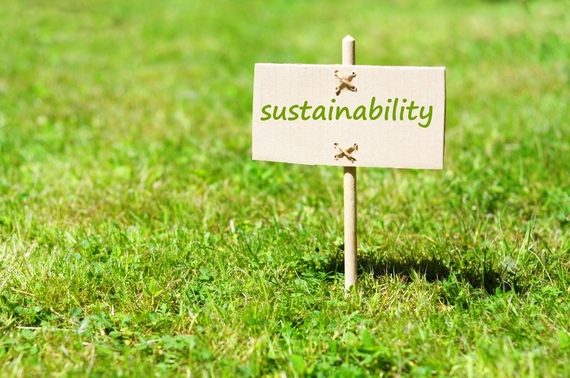Startup companies are in unique position. Not only are they poised to bring potentially game-changing businesses to the marketplace; they also are starting from scratch with their physical location. Offices and overhead are a huge part of the fiscal picture, so launching an office with a "green" philosophy can set startups on a cost-saving path from the very beginning. Plus, eco-friendly offices show potential customers that sustainability is a top company concern. Here are five easy ways to establish a green office right from the start.
1. Include Green Space
Ideally, you will be able to find an office space that features natural light, plenty of windows and maybe even a courtyard or patio space. Consider placing living plants throughout the office or in one centralized location so that employees can take a break with Mother Nature. Besides, living plants in the office can help filter airborne pollutants from the air and send oxygen into the air. Choose a natural, and organic look instead of sterile cubicles.
2. Recycling Depots
Make sure employees understand from the get-go that "reduce, reuse, recycle" is a core value of the company. Provide recycling depots throughout the office where workers can deposit their plastic, paper, beverage bottles and other recyclable materials. Make sure the areas are well kept and often emptied to encourage regular use. Each desk should have recycling bins as well, along with a trashcan.
3. Eco-Friendly Furniture
The look of natural wood brings a touch of the organic to office spaces, but real wood isn't necessarily the best choice. Better alternatives include furniture made of HDPE lumber, bamboo or aluminum. HDPE is made from recycled plastics while bamboo is a fast-growing plant that is highly renewable. Choosing green furniture means less maintenance, no risk of contributing to deforestation and a lower price point than traditional materials.
4. No-Print Policy
Did you know that in 2009 the US government converted to a paperless budget and saved 20 tons of paper, 500 trees, and millions of dollars? Instead of printing every meeting agenda or manual, make as many documents as possible available electronically. Encourage staff members to bring their laptops or tablet computers to meetings, or project the agenda on the conference room wall so everyone can see it at once. Choose email to disseminate information instead of printing memos. Tell employees to print things out only when necessary and to make sure they are only printing the vital information from among all the pages.
5. Wise Lighting
LED or compact fluorescent light bulbs should be the norm in your office. Each room should be equipped with a motion sensor, so the lights go off when no one is in the room. According to this infographic, Compact Florescent Light Bulbs (CFLs) use 66% less energy than standard bulbs. Remember those windows mentioned above? Keep the blinds open during the day to illuminate the room, so fewer electric lights have to be used.
Bottom Line:
If you are just starting to think about going green, then you are behind the times. When you are starting your office - and business - from the ground up, it is easy to make green choices. These five approaches are a good start in saving money and helping the environment while you build your dream company. Remember, the best time to plant a tree was 20 years ago; the second best time is today!
